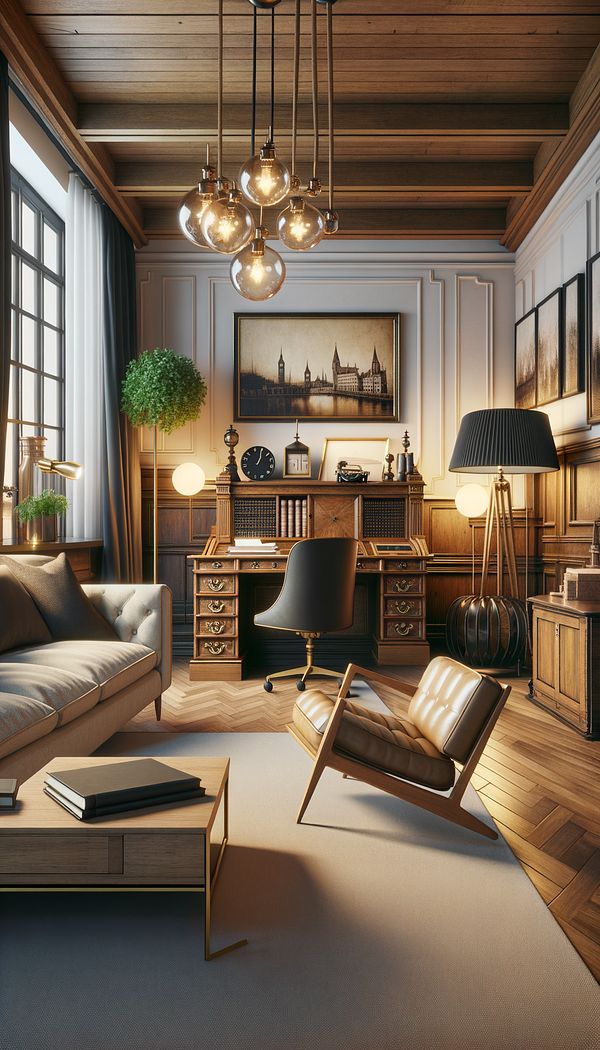What is an Antique?
A high-value item that is at least 100 years old.
Description
In the world of interior design, an antique is more than just an old item; it's a piece of history that has stood the test of time, adding depth, character, and a touch of nostalgia to any space. Typically, for an item to be considered an antique, it must be at least 100 years old. This age criteria helps differentiate antiques from vintage items, which are usually defined as being at least 20 years old but less than 100.
Antiques come in various forms, from furniture types, decorative objects, to lighting [[fixtures-and-hardware]]. Each piece tells its own story and offers a glimpse into the past, reflecting the craftsmanship, materials, and aesthetic preferences of its era. Collecting antiques is not only a passion for many but also a way of preserving history and enhancing interior spaces with unique, timeless treasures.
Integrating antiques into modern design schemes can add contrast and interest, creating a dialogue between the past and present. However, selecting the right antique pieces and incorporating them thoughtfully into contemporary environments requires a keen eye for design and an appreciation for historical context.
Usage
Antiques are commonly found in homes, museums, and specialty stores. They might be used to anchor a room's design theme, serve as a conversation piece, or complement other decorative elements. In homes, antique furniture can add elegance and character, while antique decorative objects can provide interesting focal points. Museums often display antiques to showcase historical artifacts and themes.
FAQs
-
How can you tell if something is an antique?
Identifying an antique typically involves examining its age, craftsmanship, and any manufacturer's marks or hallmarks. Consulting experts or using authentication services can also help determine an item's authenticity and age.
-
Do antiques hold their value?
Yes, antiques can hold their value and even appreciate over time, depending on their rarity, condition, historical significance, and market demand.
-
Are antiques always expensive?
Not necessarily. The value of antiques can vary widely based on factors such as condition, rarity, provenance, and current trends. While some antiques are highly valuable, others can be more affordable.
-
Can antiques be restored?
Yes, antiques can be restored, but it's important to do so carefully and, if possible, under the guidance of a professional. Improper restoration can diminish an item's value and authenticity.
-
How do antiques fit into modern interior design?
Antiques can be seamlessly integrated into modern interiors by serving as statement pieces that add contrast and historical depth. Mixing them with contemporary furnishings and decor creates an eclectic, personalized look.
-
Are there any specific care instructions for antiques?
Yes, antiques often require special care, including regular dusting, avoiding direct sunlight and extreme temperatures, and using appropriate cleaning products to preserve their finish and materials.
Practical Application
When incorporating antiques into your interior design, consider the scale and style of the items in relation to the rest of your space. Use antiques as focal points or to add layers of texture and history to your environment. Mixing antiques with modern pieces can create a dynamic, eclectic look. Additionally, ensure that you take proper care of your antique items to preserve their beauty and value over time.
-
Design Styles478 articles
-
Furniture Types599 articles
-
Lighting111 articles
-
Decorative Objects240 articles
-
Historical Periods & Movements150 articles
-
UpscaleUpscale refers to high-end or luxury aspects in interior design.
-
Rule JointA type of hinge commonly used in drop-leaf tables.
-
MullionA vertical bar between the panes of glass in a window.
-
ContinentalIn interior design, 'Continental' refers to a style that incorporates elements characteristic of European influence.
-
ChestA piece of furniture designed for storage.
